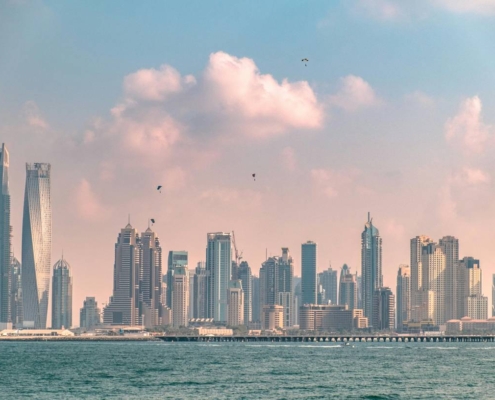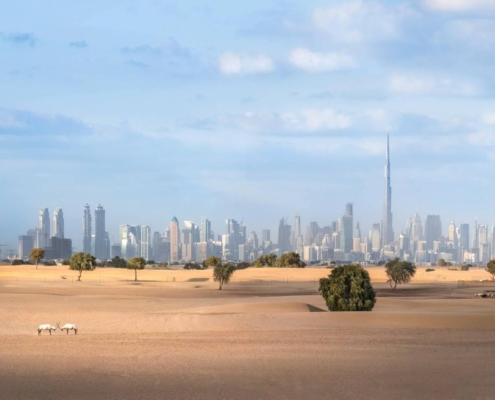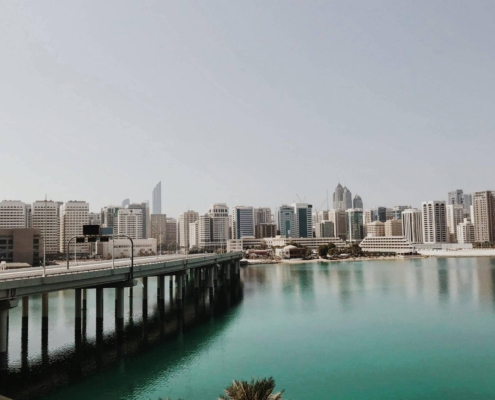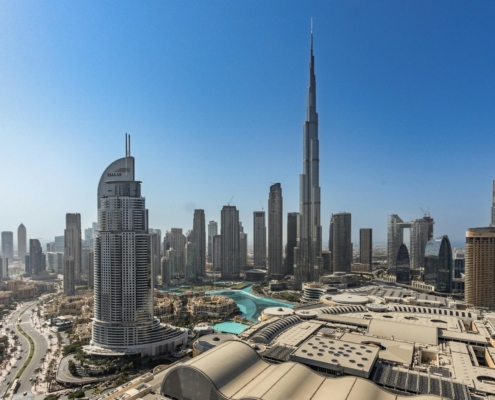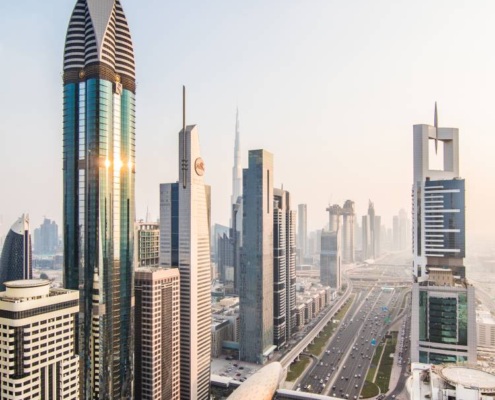 https://nobilior.com/wp-content/uploads/2025/09/Uae-investment-firm.webp
1125
750
Reza
https://nobilior.com/wp-content/uploads/2025/08/Transparent-logo-nobilior-559x430.png
Reza2025-09-25 08:46:372025-09-25 08:46:38How to Invest in the UAE: A Guide to Stocks, Real Estate, and Mutual Funds
https://nobilior.com/wp-content/uploads/2025/09/Uae-investment-firm.webp
1125
750
Reza
https://nobilior.com/wp-content/uploads/2025/08/Transparent-logo-nobilior-559x430.png
Reza2025-09-25 08:46:372025-09-25 08:46:38How to Invest in the UAE: A Guide to Stocks, Real Estate, and Mutual Fundsle investing was simplistically equated with negative screening—the act of excluding “sin stocks” like tobacco or firearms. The modern investor, especially the discerning high-net-worth individual (HNWI) in Dubai, Abu Dhabi, and beyond, demands more. They seek not just a clean conscience but robust financial performance, resilience against climate-related risks, and a verifiable, positive impact on the world. They are rightfully skeptical of “greenwashing”—the practice of making misleading claims about environmental benefits—and demand transparency and authenticity.
This comprehensive guide is designed for this new era of investor. We will move beyond superficial ESG scores to explore the heart of authentic sustainable investing in the UAE context. We will delve into the sophisticated strategies that define the market in 2025, analyze the robust regulatory environment, identify high-growth sectors, and provide a practical framework for integrating your values with your financial objectives. The goal is not just to inform but to empower you to build a legacy that is both prosperous and purposeful.
From Niche to Mainstream: The Unstoppable Rise of Sustainable Capital in the UAE
The UAE’s commitment to sustainable finance is not a recent development but the culmination of a long-term strategic vision. The launch of the UAE Energy Strategy 2050 and the UAE Net Zero by 2050 Strategic Initiative laid the groundwork, signaling a national pivot towards a sustainable economic model. This vision is being powered by colossal capital deployment from sovereign wealth funds like Mubadala and ADQ, which have embedded sustainability metrics into their core investment decision-making processes.
The hosting of COP28 in Dubai Expo City was a catalytic event. It was more than a conference; it was a global statement of intent. It accelerated the implementation of the UAE’s Sustainable Finance Framework and spurred the UAE Securities and Commodities Authority (SCA) to enhance its ESG disclosure requirements for listed companies. This top-down drive has created a powerful pull effect, encouraging private corporations, financial institutions, and individual investors to align their strategies with the national agenda.
The data is unequivocal. According to a 2024 report by the Abu Dhabi Global Market (ADGM), assets under management (AUM) in UAE-domiciled funds that qualify as “sustainable” have grown by over 200% since 2022. This influx is not merely driven by ideology; it is increasingly driven by performance. A meta-analysis of regional fund performance from 2021 to 2024, conducted by financial research firms, consistently shows that portfolios with high sustainability ratings have demonstrated lower volatility and comparable, if not superior, risk-adjusted returns compared to their conventional counterparts. This dispels the enduring myth that sustainable investing necessitates a financial sacrifice. In the modern, transition-oriented economy, it is quite the opposite: it is a source of alpha and a critical risk mitigation tool.
Deconstructing the Lexicon: ESG, Impact, and Values-Based Investing
To navigate this landscape effectively, one must understand the nuanced terminology. These are not interchangeable terms but represent a spectrum of approaches with different intentions and methodologies.
ESG Integration: This is the baseline practice. It involves the explicit inclusion of Environmental, Social, and Governance (ESG) factors into financial analysis and investment decisions. The goal is to identify material, non-financial risks and opportunities that could affect an investment’s return. For example, an analyst might evaluate a company’s water usage efficiency (E), its labor practices in the supply chain (S), and the diversity of its board (G). A high ESG score typically indicates lower operational and reputational risk, not necessarily a positive impact.
Impact Investing: This approach is more proactive and intentional. The core objective is to generate measurable, positive social or environmental impact alongside a financial return. Investments are made into companies, organizations, and funds with the specific mission of addressing a global challenge, such as clean energy access, affordable housing, or sustainable agriculture. Returns can range from below-market to market-rate, but the defining feature is the intentionality and the rigor of impact measurement. The Global Impact Investing Network (GIIN) provides standardized metrics for this purpose.
Values-Based Screening: This is often the starting point for many investors. It involves including or excluding investments based on specific ethical, religious, or moral beliefs. The most common form is negative screening (avoiding industries like gambling, alcohol, or weapons). In the UAE and the wider GCC, this frequently overlaps with Sharia-Compliant Investing, which screens out businesses involving interest (riba), excessive uncertainty (gharar), and prohibited activities. A powerful and growing trend is the combination of Sharia principles with ESG criteria, creating a powerful dual-filter for investors seeking both faith-based and ethical alignment.
The most sophisticated portfolios in 2025 will often blend these approaches. An investor might use ESG integration across their entire portfolio for risk management, allocate a specific percentage to thematic impact investments targeting UAE Net Zero goals, and employ values-based screening to ensure alignment with personal principles.
The Regulatory Backbone: UAE’s Framework for Sustainable Finance
A robust and transparent regulatory environment is essential for building investor confidence and combating greenwashing. The UAE has made significant strides in this area, primarily through two key jurisdictions: the SCA and the ADGM.
Securities and Commodities Authority (SCA): In 2024, the SCA finalized its ESG Disclosure Guidance for listed public joint-stock companies. While not yet mandatory across the board, it establishes a clear expectation for enhanced reporting. Companies are encouraged to report on their governance structures around sustainability, climate-related risks and opportunities (using the Task Force on Climate-related Financial Disclosures – TCFD framework), and specific environmental and social metrics. This push for transparency allows investors to make more informed decisions based on comparable data.
Abu Dhabi Global Market (ADGM): The ADGM has positioned itself as a leader in sustainable finance regulation. Its Sustainable Finance Regulatory Framework is among the most comprehensive in the region. It includes:
-
A Sustainable Fund Regime: Providing a clear labelling system for funds based on their sustainability objectives, ensuring clarity for investors.
-
ESG Disclosure Rules: Mandatory for all ADGM authorized firms, creating a level playing field.
-
Guidance on Climate Risk Management: Expecting firms to integrate climate risk into their overall risk management frameworks.
These regulations are not burdens; they are guardrails. They protect investors from unsubstantiated claims and ensure that the capital labelled as “green” is actually driving the transition it promises to fund.
Sector Deep Dive: Where is the Smart Money Going in 2025?
The UAE’s economic diversification plans provide a clear roadmap for identifying high-conviction sustainable investment opportunities. Capital is flowing strategically into sectors critical to the post-hydrocarbon future.
1. Renewable Energy & Green Hydrogen:
The UAE is already a world leader in cost-effective solar power, thanks to projects like the Al Dhafra Solar PV Plant. The next frontier is green hydrogen—produced using renewable energy. Masdar is spearheading ambitious projects to position the UAE as a major exporter of this clean fuel. Investment opportunities exist not only in project equity but also across the entire value chain: electrolyzer manufacturing, storage technology, and specialized logistics.
2. Sustainable Agri-Tech and Water Security:
With extreme heat and water scarcity being existential challenges, technology-driven solutions are a critical investment theme. This includes:
-
Vertical Farming: Companies like Madar Farms are using IoT and AI to grow food with 95% less water in controlled environments.
-
Desalination Technology: Investing in R&D for energy-efficient, reverse osmosis desalination plants is a national priority.
-
Water Reclamation: Technologies that enable greywater and wastewater recycling for agricultural and industrial use.
3. Green Real Estate and Sustainable Infrastructure:
The built environment is a major contributor to carbon emissions. Sustainable investing here focuses on:
-
LEED-Certified Developments: Investing in commercial and residential properties that meet the highest standards for energy efficiency, water use, and indoor environmental quality.
-
Retrofit Technologies: Companies that provide solutions for upgrading existing building stock to reduce its carbon footprint.
-
Sustainable Mobility Infrastructure: This includes charging networks for electric vehicles, as well as investments in public transit and smart city infrastructure that reduce congestion and pollution.
4. Circular Economy and Waste Management:
Moving away from a “take-make-dispose” model is crucial. Investments in advanced recycling facilities, waste-to-energy plants, and startups creating products from recycled materials are gaining significant traction. The UAE’s policy of diverting 75% of waste from landfills by 2025 creates a powerful regulatory tailwind for this sector.
The Greenwashing Dilemma: How to Scrutinize and Verify Claims
As the sustainable investing market grows, so does the temptation for some entities to overstate their credentials. For the astute investor, developing a healthy skepticism and a toolkit for verification is essential. Greenwashing can take many forms: a company highlighting a minor green initiative while its core business is highly polluting, or a fund using vague, unsubstantiated language in its marketing materials.
Red Flags and Key Questions to Ask:
-
Vague Language: Be wary of terms like “green,” “eco-friendly,” or “natural” without specific, quantifiable data to back them up.
-
Misleading Imagery: Using pictures of nature and forests for a company whose operations have a significant environmental footprint.
-
Emphasizing a Single Attribute: Promoting one positive product feature while ignoring larger negative impacts (e.g., an “organic” product with excessive packaging).
-
Irrelevant Claims: Stating something that is true but unimportant or is a legal requirement, making it seem like a voluntary benefit.
Due Diligence Framework:
-
Scrutinize the Prospectus: Don’t rely on the marketing brochure. Go to the fund’s official offering documents. How do they define “sustainable”? What are their specific exclusion criteria?
-
Demand Transparency on Metrics: Ask your wealth manager or the fund provider: “What are your key performance indicators (KPIs) for impact? How are they measured and reported?” Look for alignment with global standards like SASB, GRI, or the UN SDGs.
-
Check Third-Party Verification: Has the fund or company been rated by a reputable third-party ESG research provider like MSCI, Sustainalytics, or ISS ESG? While not perfect, these ratings provide an independent assessment.
-
Assess Alignment: Does this investment directly contribute to a sustainability goal you care about, such as GHG reduction or water conservation? Can that contribution be measured?
A credible wealth manager will welcome these questions and should be able to provide clear, evidence-based answers.
A Practical Framework: Building Your Authentic Sustainable Portfolio
Transitioning to a sustainable investment strategy is a journey, not a single transaction. Here is a structured, step-by-step approach for a HNWI based in the UAE.
Step 1: Self-Definition and Goal Setting
Before looking at any investment product, look inward. What does “sustainability” mean to you? Is your primary focus climate change, social equality, governance ethics, or a combination? Are you strictly avoiding certain industries? Defining your personal values and impact objectives is the crucial first step. This becomes your investment policy statement’s guiding light.
Step 2: Portfolio Review and Baseline Assessment
Work with your advisor to conduct a thorough sustainability audit of your existing portfolio. Using third-party tools, analyze the weighted average carbon intensity, ESG ratings, and alignment of your current holdings with your stated goals. This establishes a baseline from which to measure progress.
Step 3: Strategic Asset Allocation and Implementation
This is where you build the new portfolio architecture.
-
Public Equity: Allocate to actively managed ESG funds with a proven track record and transparent methodology or to passively managed ETFs that track ESG-indexes. Thematic ETFs focusing on clean energy or electric vehicles can provide targeted exposure.
-
Fixed Income: Explore green bonds and sukuk issued by UAE entities like Etihad Airways or Masdar, which ring-fence proceeds for environmentally friendly projects.
-
Alternatives: This is where significant impact can be achieved. Allocate to private equity or venture capital funds that specifically invest in climate tech, agri-tech, or circular economy startups within the GCC. This provides access to high-growth companies directly contributing to the region’s sustainability transition.
-
Liquidity and Rebalancing: Ensure your plan accounts for liquidity needs and includes a schedule for rebalancing to maintain your target allocation and risk profile.
Step 4: Active Ownership and Engagement
Sustainable investing does not end at the point of purchase. The most influential investors use their voice. This can mean proxy voting on key ESG shareholder resolutions or engaging directly with company management through your wealth manager to encourage better practices. Engaging with a company to improve its ESG performance can create value for all shareholders.
Step 5: Measurement, Reporting, and Evolution
Regularly review performance on two fronts: financial returns and impact metrics. Your advisor should provide clear reporting that shows not just your portfolio’s performance against benchmarks, but also its carbon footprint, its alignment with the SDGs, or any other impact KPIs you value. Use this reporting to refine and evolve your strategy over time.
Case Study: The Al-Jamil Family Portfolio Transition
(Note: This is a anonymized composite based on real client experiences.)
Background: The Al-Jamil family, based in Dubai, had a substantial portfolio heavily weighted in traditional energy stocks and conventional real estate. They expressed a desire to future-proof their wealth and align it with their children’s values and the UAE’s national vision.
Process:
-
Nobilior’s team conducted a series of workshops with the family to define their goals, resulting in a focus on climate change mitigation and supporting UAE-based innovation.
-
A portfolio audit revealed a carbon intensity 40% higher than the MSCI All Country World Index.
-
The Strategy:
-
Divestment: Phased divestment from the highest-emitting assets.
-
Reallocation:
-
Public Markets: Capital was reallocated to a global ESG leaders equity fund and a thematic ETF focused on smart grid technology.
-
Private Markets: A 15% allocation was made to a venture capital fund investing in early-stage Gulf-based cleantech startups.
-
Real Assets: Investment in a solar-powered, LEED Platinum-certified logistics warehouse in Abu Dhabi.
-
-
Fixed Income: The corporate bond allocation was shifted to a green bond index fund.
-
Outcome (18 Months Later):
-
The portfolio’s carbon intensity was reduced by over 60%.
-
Financial performance slightly outperformed the family’s previous benchmark, demonstrating no financial sacrifice.
-
The family reported high satisfaction from knowing their capital was directly funding the energy transition and supporting regional entrepreneurs. The annual impact report provided tangible metrics on renewable energy generation and GHG avoidance from their investments.
Conclusion: Investing with Purpose in the UAE’s Next Chapter
The journey of sustainable investing in the UAE has moved from the periphery to the very core of strategic wealth creation. It is no longer a question of if one should incorporate sustainability principles, but how to do it most effectively and authentically. The opportunities presented by the UAE’s clear national vision, coupled with a maturing regulatory landscape and a growing universe of sophisticated financial products, are unprecedented.
The path forward requires moving beyond simplistic labels and box-ticking exercises. It demands a deeper engagement with your capital, a curiosity about the impact it can generate, and a partnership with a wealth manager who possesses not only the analytical tools to assess risk and return but also the philosophical understanding of what it means to invest for a sustainable future.
At Nobilior, we believe that the most enduring wealth is that which generates positive returns for both our clients and the world they will leave behind. The year 2025 is not a finish line; it is a powerful launching point. We stand ready to guide you in building a portfolio that is as resilient and purposeful as the UAE’s own ambitious vision for the decades to come.
Disclaimer: This guide is for informational purposes only and does not constitute financial advice, a recommendation, or an offer to buy or sell any securities or investment products. You should consult with a qualified financial advisor to understand your specific circumstances and risk tolerance before making any investment decisions. Past performance is not indicative of future results.

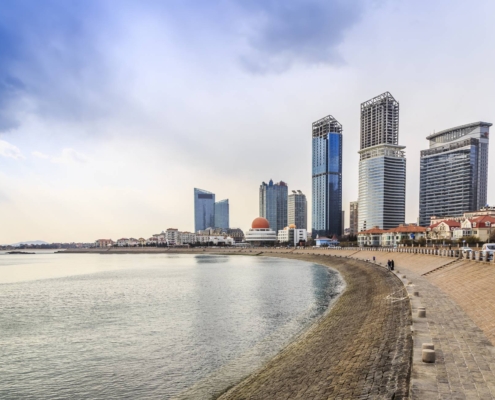 Freepik
Freepik Photo by Denys Gromov: https://www.pexels.com/photo/dubai-marina-under-blue-sky-4471200/
Photo by Denys Gromov: https://www.pexels.com/photo/dubai-marina-under-blue-sky-4471200/